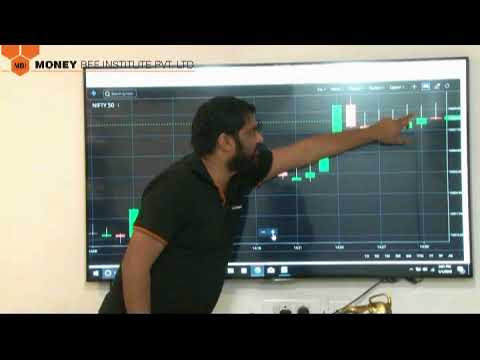Содержание

If you unwind the PLMBS, you must unwind the agency trusts, and the government is making some hefty coin off the former GSE slush funds. This is silly, these are CDO Trusts that do not include residential MBS. NY Courts could not give a rats ass when the mortgage was assigned. The JPMCC 2016-FL8 class A certificates have a stated annual coupon of one-month Libor plus 222 basis points and the JPMCC 2016-H2FL class A certificates have a stated annual coupon of Libor plus 210 basis points.

A REMIC itself is exempt from federal taxes, although income earned by investors is fully taxable. Nonmortgage assets, such as credit card receivables, leases, and auto loans are ineligible investments. The Tax Reform Act made it easier for savings institutions and real estate investment trusts to hold mortgage securities as qualified portfolio investments. A savings institution, for instance, can include REMIC-issued mortgage-backed securities as qualifying assets in meeting federal requirements for treatment as a savings and loan for tax purposes.
A loan-servicing agent will A) package the loan for an investor. A) More than 80 percent of mortgage loans finance residential home purchases. C) Less than 65 percent of mortgage loans finance residential home purchases. C) Over 80 percent of mortgage loans finance residential home purchases. Because the relief would ultimately change the structure of these loans, it would have an effect on how REMICs are structured, too. The IRS has ensured that these investments and their issuers will remain safe from any tax implications if borrowers take advantage of these emergency measures.
Marketable equity securities can be either common stock or preferred stock. They are equity securities of a public company held by another corporation and are listed in the balance sheet of the holding company. The cash ratio is calculated as the sum of the market value of cash and marketable securities divided by a company’s current liabilities. Creditors prefer a ratio above 1 since this means that a firm will be able to cover all its short-term debt if they came due now.
Common Examples of Marketable Securities
Mortgage-backed securities A) have been growing in popularity in recent years as institutional investors look for attractive investment opportunities. C) are securities collateralized by both insured and uninsured mortgages. During the early years of a balloon mortgage loan, the lender applies A) most of the monthly payment to the outstanding principal balance. B) all of the monthly payment to the outstanding principal balance. E) the monthly payment equally to interest on the loan and the outstanding principal balance.

REMICs and mortgage-backed securities they issue are governed by pooling and servicing agreements . PSAs define the various roles and limitations of each party involved in the transaction process. For instance, a PSA will define the exact situations in which the servicing of a CMBS loan is switched from a master or primary servicer to a special servicer. PSAs also define which assets can be held inside the REMIC, pursuant to U.S. federal regulations, which we’ll detail in the paragraphs below. The rules regarding taxation of income from REMICs are complex and should be addressed by a certified public accountant with expertise in real estate taxation.
Types of Marketable Securities
In some cases, such as IBRD’s Enclave Loans,6 limited or non-recourse projects, or pre-export financing arrangements, related collateral tends to be used. Yet, there are instances where project financing is backed by unrelated collateral, which often takes the form of receivables from commodity exports. While CMOs and CDOs have similar wrappers on the outside, they are different on the inside. The CMO is a little easier to understand as the cash flow it provides is from a specific pool of mortgages while the CDOcash flows can be backed by automobile loans, credit card loans, commercial loans, and even some tranches from a CMO. The issuer of the CMO, as a legal entity, is the legal owner of a pool of mortgages that are purchased from banks and mortgage companies. Prior to the advent of repackaging mortgages, a borrower would visit his local bank who would lend out money for the purchase of a home.
The investing section of the statement always shows the cash used to purchase securities or the cash received from the sale of securities. For example, when marketable securities are sold at a gain, the cash inflow from the sale would be denoted on the cash flow statement. Marketable securities are also denoted under shareholder’s equity on the balance sheet as unrealized proceeds. They are unrealized because they have not been sold as yet so their value can still change. They are listed at their current market value as they are under the assets section of the balance sheet. Since most of the marketable securities are considered as current assets.
Even though REMICs, which are special purpose vehicles, are collateralized mortgage obligations and can be complex investment vehicles, they are debt securities and suitable for the more risk-averse investors. It is important to choose the REMICs in which you invest carefully so you don’t have any nasty surprises when tax time rolls around. Chosen properly, REMICs can allow you to shelter other income from taxes.
- Mortgage-backed securities have declined in popularity in recent years as institutional investors have sought higher returns in other markets.
- Chosen properly, REMICs can allow you to shelter other income from taxes.
- The return on these types of securities is low, due to the fact that marketable securities are highly liquid and are considered safe investments.
- Governments may also request collateral from beneficiaries when offering sovereign guarantees.
However, cash contributions avoid this tax if they are given three months after the startup day, involve a clean-up call or qualified liquidation, are made as a guarantee, or are contributed by a residual interest holder to a qualified reserve fund. “Many states have adopted whole or partial tax exemptions for entities that qualify as REMICs under federal law.” A fixed asset is a long-term tangible asset that a firm owns and uses to produce income and is not expected to be used or sold within a year.
Mortgage-Backed Securities and Collateralized Mortgage Obligations
Lewis Ranieri, former bond trader and former vice-chair of Salomon Brothers, is credited with introducing securitization to the financial world. A 1099-INT is the tax form used to report interest income to investors and the IRS. Yarilet Perez is an experienced multimedia journalist and fact-checker with a Master of Science in Journalism. She has worked in multiple cities covering breaking news, politics, education, and more. Her expertise is in personal finance and investing, and real estate.
Other reasons for issuing such a type of securities include the need for a long-term investment horizon. Non-marketable security refers to a security that is not traded on any major securities exchange. Non-marketable securities are mainly traded as part of a private transaction. Ascertainable asks how easy it is to quote or quantify a price ; this is often achieved using an appraiser , although stocks and bonds are also highly ascertainable since they trade in real-time in public markets.
The assets held by exchange-traded funds may themselves be marketable securities, such as stocks in the Dow Jones. However, ETFs may also hold assets that are not marketable securities, such as gold and other precious metals. They are considered to be a safe option for investors who are averse to risk.
REMICs: Real Estate Mortgage Conduits and CMBS Loans
Unlike an MBS, the investor can choose how much reinvestment riskhe is willing to take in a CMO. Investment in non-marketable securities is ideal for investors with a long-term investment horizon, a guaranteed return, and who have disposable income they will not need until the maturity of the investment. Fixed income refers to assets and securities that bear fixed cash flows for investors, such as fixed rate interest or dividends. This volatility can be emotionally difficult for some investors to tolerate, and it may also make it difficult for investors to achieve long-term investment goals. By investing in a variety of marketable securities, investors can achieve a diversified portfolio that spreads risk across multiple assets. This can help to reduce specific investment risks in addition to offering the potential for attractive returns.
The work of the IMF and World Bank suggests that the availability of collateralized financing can be beneficial to a developing country borrower under a range of circumstances, but also points to pitfalls. Collateralized mortgage obligations are investment debt securities consisting of packaged mortgages organized according to their risk profiles. CDOs were a relatively small segment of the ABS market with only $340 million outstanding issues in 2002 compared to the total CMO market of $4.7 trillion.
Disadvantages of Non-Marketable Securities
In return, the shareholder receives voting rights and periodic dividends based on the company’s profitability. The value of a company’s stock can fluctuate wildly depending on the industry and the individual business in question, so investing in the stock market can be a risky move. However, many people make a very good living investing in equities. Because REIT ownership is evidenced by shares, distributions are reported to REIT investors on Form 1099-DIV. Although the items that constitute REIT income are not separately stated , not all REIT distributions are ordinary income.
REMICs abolish many of the inefficiencies of collateralized mortgage obligations and offer issuers more options and greater flexibility. REMICs have no minimum equity requirements, so REMICs can sell all of their assets rather than retain some to meet collateralization requirements. Since regular interests automatically qualify as debt, REMICs also avoid the awkward reinvestment risk that CMO issuers bear to indicate debt.
Also, the savings https://1investing.in/ carry minimum risk, as they are backed by the U.S. The quick ratio is a calculation that measures a company’s ability to meet its short-term obligations with its most liquid assets. Marketable securities are evaluated by analysts when conducting liquidity ratio analysis on a company or sector. Liquidity ratios measure a company’s ability to meet its short-term financial obligations as they come due. Businesses typically hold cash in their reserves to prepare them for situations in which they may need to act swiftly, such as taking advantage of an acquisition opportunity that comes up or making contingent payments.
They were rated BBB- by Standard & Poor’s at issuance in March, but KBRA expects to assign an AAA rating to the senior tranche of the re-REMIC. Peaslee and Nirenberg have dubbed these tests the interests test, assets test, and arrangements test.
remics issue marketable securities that are collateralized bys are sometimes referred to as CMOs, or Collateralized Mortgage Obligations. Freddie Mac began issuing REMICs in March 1988 and issued the first REMIC backed by Gold PCs in October 1990. However, securitization most often occurs with loans and other assets that generate receivables such as different types of consumer or commercial debt. It can involve the pooling of contractual debts such as auto loans and credit card debt obligations. Asset-backed SecuritiesAsset-backed Securities is an umbrella term used to refer to a kind of security that derives its value from a pool of assets, such as bonds, home loans, car loans, or even credit card payments. Treasury BondsA Treasury Bond (or T-bond) is a government debt security with a fixed rate of return and relatively low risk, as issued by the US government.
